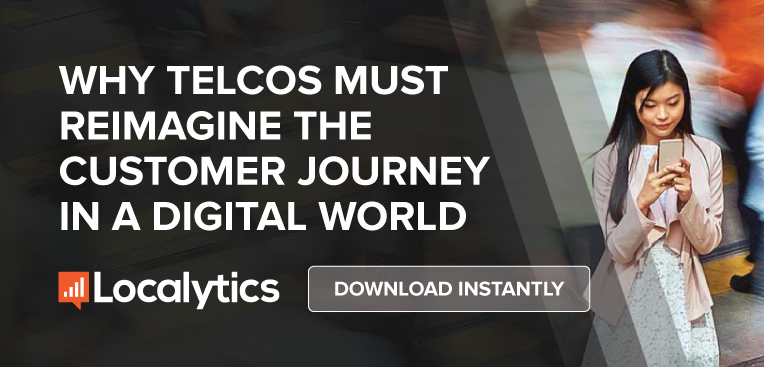With a heritage of being a public utility, service providers have made great strides moving from an engineering dominant DNA to a marketing and customer focused organization. Gone are the days of customer service reps telling you your choices were a black rotary telephone or…a black rotary telephone.
Although service providers are still highly regulated, they have transitioned from public utilities to powerful forces in the media and technology industry. In this new world, the customer is king. And as such, service providers have been working on strategic initiatives around customer experience.
Let’s take a look at what some of the industry leaders have been doing with regard to customer experience initiatives across the industry.
Comcast streamlines omnichannel
Comcast has embarked on an omnichannel initiative to drive a seamless customer experience. Providing consistent and contextual data and the next best action at the various and distinct customer touchpoints is the way Comcast has chosen to create a unique customer experience. An effective omnichannel experience will bolster the ease of use and the customer’s ability to move across multiple channels but still have the same experience.
The Un-carrier goes old school
In true “Un-Carrier” fashion, T-Mobile developed a customer experience program that truly bucked the industry—it minimizes the use of technologies like IVRs, bots and AI in their call centers. Instead, T-Mobile created a network of dedicated regional customer service teams. These teams are empowered and enabled to handle a range of issues from the most basic account management to complicated service issues. The underlying tenet is the customer has the confidence and reassurance of dealing with the same human-beings, assuming their issue is not resolved right away.
Vodafone looks to AI and AR
At the other end of the spectrum and the opposite side of the world, Vodafone is betting on investments in technologies like AI, AR, and the use of video. These capabilities should enable their customer service organization to handle an issue either offline, in batch fashion, or in real-time. It allows the customer service rep to see exactly what the customer sees. These new technologies have proven to benefit customer troubleshooting, through video capabilities allowing the reps to better visualize the issue, thereby improved issue resolution and reducing truck rolls by 26%Additionally, the video has proven extremely helpful in visualizing a specific customer problem or issue has significantly improved call resolution and also attributed to 26% reduction in truck rolls.
Verizon bets on AI
Verizon launched Digital CX, a suite of solutions which encompassed the use of AI and cognitive computing to enhance customer experience. The customer receives a personalized experience based on their historic interactions with any of your channels, such as SMS, email, or phone. The suite of solutions collects customer data, establishes trends and insights, and overtime can make predictions about customers needs—like a recommended movie or the best next action to take to resolve an account management issue. Meanwhile, the customer service reps have access to all customer data across multiple platforms and can make a personalized recommendation to the customer.
Customer Centricity
As service providers continue to experience greater competition from other service providers, as well as new entrants in the market such as web-scale companies and OTT providers, they are accelerating their digital transformations in order to keep up. The very well scoped and defined customer experience projects are now quickly morphing into broader and more strategic initiatives known as customer centricity.
So what’s the difference between customer experience and customer centricity? Despite the fact that many use the terms as synonyms, they are not. Customer experience is a subset of customer centricity—customer experience is an outcome while customer centricity is the why, and the how, companies deliver the product or service. Customer centricity involves three key elements—culture, processes, and technologies to be successful.
The customer experience examples referenced above all delivered positive benefits, but were isolated to specific parts of the business. Additionally, service providers were able to prove out certain technologies like advanced AR and AI. Now fast forward 24–36 months and these technologies are more mature and robust. Service providers are recognizing the need to include a wider and deeper customer centric program in their Digital Transformations.
Customer-centricity is going mainstream. Recently, Verizon announced a bold new initiative “Verizon 2.0” with the primary objective of creating a customer-centric organization. The announcement came with significant organizational changes—with a focus on being more intune with customers. The statement from CEO Hans Vestberg mentioned that the entire company was transforming its culture, processes and technology with the aim of being a more customer-centric organization.
The world’s most forward-thinking providers are all transforming their companies to be customer centric. The dials have shifted—service providers are now more mature and the industry’s best are now shifting their entire organizations customer-centric. And not only are the normal titans of the telco industry the only threats as OTTs invade the space. With more competition and more pressure to keep up, brands need now, more than ever, a means to execute their customer-centric initiatives. Digital intelligence is a key component to your customer-centric goals—in order to get to know your customers, you’ll need the tools to do so. You’ll need the right culture, the right processes, and the right technologies to make your customers happy and retain them in the long run.
Learn more with our e-book Why Telcos Must Reimagine the Customer Journey


